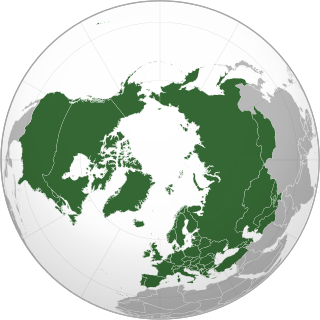
Belarus elects on national level a head of state - the president - and a legislature. The president is elected for a five-year term by the people. The National Assembly has two chambers. The House of Representatives has 110 members elected in single-seat constituencies elected for a four-year term. The Council of the Republic has 64 members, 56 members indirectly elected and eight members appointed by the president.

Federal elections were held in Germany on 19 January 1919, although members of the standing army in the east voted for their representatives only on 2 February. The elections were the first of the new Weimar Republic following World War I and the Revolution of 1918–19. It was also the first German election held using proportional representation and with women's suffrage. It is also reckoned as the first truly free and fair all-German election, as it was the first to be held after the scrapping of the old constituencies that over-represented rural areas. The voting age was lowered to 20, down from 25 which it had been in the Reichstag election of 1912.
Parliamentary elections were held in Czechoslovakia on 26 May 1946. The Communist Party of Czechoslovakia emerged as the largest party, winning 114 of the 300 seats with 38% of the vote. This was the best performance for a Czechoslovak party up to that time; previously no Czechoslovak party had ever won more than 25 percent of the vote. Voter turnout was 93.9%. As it turned out, this was one of only two even partially free elections held in what would become the Eastern bloc, the other having been held in Hungary a year earlier. It would be the last free election held in Czechoslovakia until 1990.

The Belarusian presidential election of 2006 was held on 19 March. The result was a victory for incumbent President Alexander Lukashenko, who received 84.4% of the vote. However, Western observers deemed the elections rigged. The Organization for Security and Co-operation in Europe (OSCE) declared that the election "failed to meet OSCE commitments for democratic elections". In contrast, election observers from the Commonwealth of Independent States (CIS) described the vote as open and transparent.

A four-question referendum was held in Belarus on 14 May 1995, alongside parliamentary elections. The four issues were the possibility of giving the Russian language equal status with Belarusian, whether new national symbols should be adopted, whether there should be economic integration with Russia and changes to the constitution that would allow early elections if Parliament systematically violated the constitution. According to official results, all four were approved by at least three-quarters of voters, with a turnout of 64.8%.

A seven-question referendum was held in Belarus on 24 November 1996. Four questions were put forward by President Alexander Lukashenko on changing the date of the country's independence day, amending the constitution, changing laws on the sale of land and the abolition of the death penalty. The Supreme Council put forward three questions on constitutional amendments by the Communist and Agrarian factions, local elections and the national finances.

A referendum on allowing President Lukashenko to stand in further elections was held in Belarus on 17 October 2004, alongside parliamentary elections. Lukashenko was nearing the end of his constitutionally-limited two terms, and the change would allow him to run for a third term. The result was 88.9% in favour, with a turnout of 90.3%.

Presidential elections were held in Belarus on 23 June 1994, with a second round on 10 July. They were the first national elections held in Belarus since the country seceded from the Soviet Union three years earlier. The result was a victory for Alexander Lukashenko, who received 80.6% of the vote in the second round. Voter turnout was 79.0% in the first round and 70.6% in the second.
Parliamentary elections were held in Belarus on 15 October 2000, with further rounds of voting on 29 October, 18 March and 1 April. The vast majority of successful candidates, 94 of 110, were independents. Voter turnout was reported to be 61.08%.
Parliamentary elections were held in Belarus on 17 October 2004, with a second round of voting in two constituencies on 27 October, and a third round in one on 20 March 2005. The vast majority of successful candidates, 97 of 109, were independents. Voter turnout was reported to be 91.04% in the first round.

The Belarusian parliamentary election, 2008 was held in Belarus on 28 September 2008. The 110 seats in the House of Representatives were at stake.
Federal elections were held in Switzerland on 28 October 1928. Although the Social Democratic Party received the most votes, the Free Democratic Party remained the largest party in the National Council, winning 58 of the 198 seats.
Federal elections were held in Switzerland on 25 October 1931. Although the Social Democratic Party received the most votes, the Free Democratic Party remained the largest party in the National Council, winning 52 of the 187 seats.

Parliamentary elections were held in Belarus on 14 May 1995 to elect the thirteenth Supreme Council. The elections took place alongside a multi-question referendum, although several further rounds of voting were required on 28 May, 29 November and 10 December. The majority of candidates elected were independents, although 62 seats remained unfilled due to insufficient voter turnout. A total of 2,348 candidates and 22 parties contested the election, around a thousand of which were independents. After the planned two rounds, only 119 of the 260 seats had been filled due to turnouts being too low in some areas. As this was well short of the 174 needed for a quorum, an additional two rounds were necessary. By the fourth round a quorum was reached, and although further rounds of voting were planned for 1996 to fill the remaining seats, following the constitutional amendments made following the referendum and the subsequent formation of a new National Assembly, they were not held.
Federal elections were held in Switzerland on 23 October 1983. The Free Democratic Party emerged as the largest party in the National Council, winning 54 of the 200 seats. It was the first time the Social Democratic Party had not received the most votes in a federal election since 1925.
Federal elections were held in Switzerland on 28 October 1951. Although the Social Democratic Party received the most votes, the Free Democratic Party remained the largest party in the National Council, winning 51 of the 196 seats.
Parliamentary elections were held in Albania on 26 May 1996, with a second round of voting for 25 seats on 2 June. The result was a victory for the ruling Democratic Party of Albania, which won 122 of the 140 seats. Voter turnout was 89.1%.
Eleven referendums were held in Switzerland during 2003. The first two were held on 9 February on federal resolutions on reforming the referendum process and changing the cantonal contribution to financing hospital medication. Both were approved. The last nine were all held on 18 May on two federal laws on the Swiss army and civil defence, and seven popular initiatives; "yes to fair rents", "for one Sunday a season free from motor vehicles–a test for four years", "health has to be affordable", "equal rights for the disabled", "electricity without nuclear power", "for prolonging the ban on new nuclear power stations" and "for a sufficient provision of vocational education". Whilst the two laws were approved, all nine initiatives were rejected by voters.
The Belarusian Patriotic Party is a political party in Belarus loyal to President Alexander Lukashenko. Nikolai Ulakhovich is party chairman.









